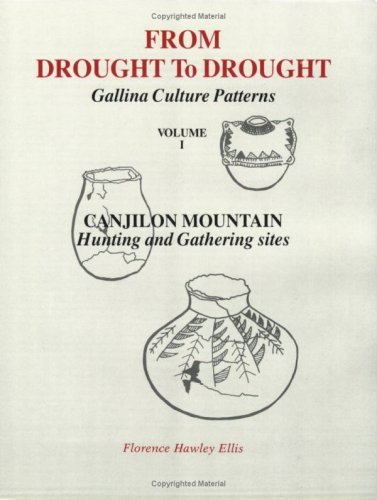
Tell your friends about this item:
From Drought to Drought: an Archaeological Record of Life Patterns As Developed by the Gallina Indians of North Central New Mexico : Canjilon Mountai
Florence Hawley Ellis
From Drought to Drought: an Archaeological Record of Life Patterns As Developed by the Gallina Indians of North Central New Mexico : Canjilon Mountai
Florence Hawley Ellis
How do Pueblo farmers survive when drought all but prevents agriculture? In 1971 archaeological research began on one of these commonly hypothesized but least actually known survival strategies. The area: Northern New Mexico; the people: one of the least studied, those of the Gallina culture; the time: the 1200s when extended drought drove people south out of Mesa Verde, Chaco and the Four Corners in general toward areas of rivers or mountains in the hope of more rain. The Gallina people established some of the highest camps known in the southwest, where they spent the summer hunting, gathering, and possibly growing some corn or beans, returning home in the fall hopefully heavily laden with dry 'jerky' meat, dried berries and medicinal plants. In the spring they had come bearing camping equipment including pottery for cooking, eating and carrying water. Now they carefully hid these items probably intending to reuse them next year, but on the return trip food must compose every ounce each camper could carry home for winter survival of their family. Finally they ceased to return. The pottery and camp sites waited quietly, unfound for 700 years to be discovered and excavated by Dr. Ellis's first Ghost Ranch Excavation Crew.
| Media | Books Paperback Book (Book with soft cover and glued back) |
| Released | July 1, 2016 |
| ISBN13 | 9780865341203 |
| Publishers | Sunstone Press |
| Pages | 216 |
| Dimensions | 210 × 280 × 20 mm · 544 g |
| Language | English |

 Christmas presents can be returned until 31 January
Christmas presents can be returned until 31 January


![Cover for Florence Hawley Ellis · San Gabriel del Yungue (Paperback Book) [Illustrated edition] (2016)](https://imusic.b-cdn.net/images/item/original/296/9780865341296.jpg?florence-hawley-ellis-2016-san-gabriel-del-yungue-paperback-book&class=scaled&v=1648104068)